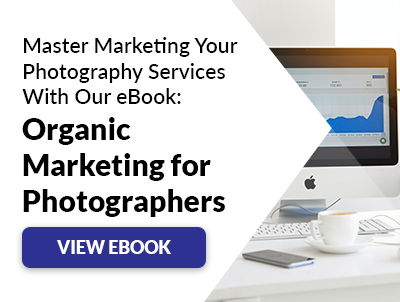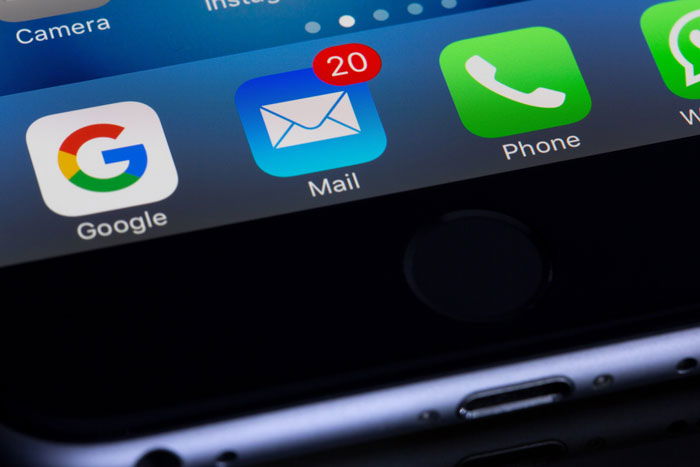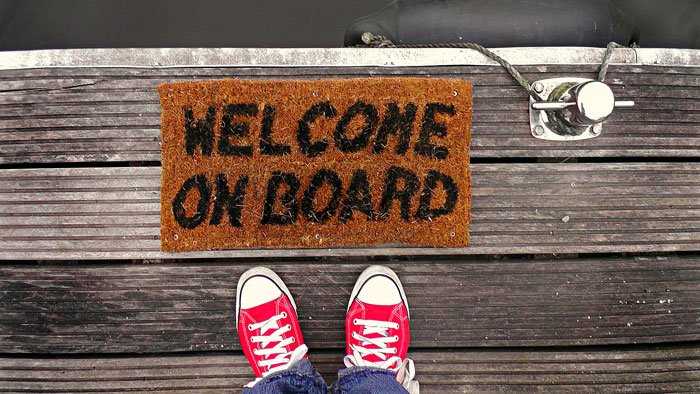This guide will help you to develop an email marketing strategy and create emails that lead to increased bookings and high opening rates.
The Benefits of Email Marketing For Photographers
To follow this tutorial, you will need an email address and an email subscriber list. That’s it! Really, there’s nothing complex or scary about email marketing for photographers. You can do this.
Benefits of Email Marketing
You might convert customers from when they first look through your website. What if that relationship takes longer to build, though? Think of the client who isn’t quite ready to book, but is doing some preliminary research. He/she might look through ten or even 20 photography websites to get a feel for what to expect. If they subscribe to your mailing list as part of that research process, you’re off to a head start. You can develop a relationship with that client through automated emails so that when they are ready to book, you’ll be top of mind. It’s also a great move to try and convert your social media followers to email subscribers. You may have an active and engaged following on social media, but social media channels are in control of those subscribers. If Instagram or Facebook change their algorithm, for example, could you still reach those followers? If you were locked out of those accounts, would you lose contact with your customers or potential clients? With emails, you own your contact list.
Developing Your Email Strategy
A good way to plan out an email strategy is to use the Who, Why, What, When, How formula. Who: Think about the different customer groups you may be contacting. Can you group your subscribers into sub-sections, who are interested in specific content? If you photograph both weddings and families, for example, divide your email list into one group for weddings and one for families. The more relevant your content is to your reader, the more likely it is to keep them engaged. Why: Identify what you want to achieve with your emails. Is your goal to increase bookings, retain clients or to educate customers? What: Plan out the information you intend to send regularly to your subscribers. Your emails should be fresh and engaging. Keep surprising your customers with varied and interesting content. For example, you might consider:
Quiet periods: this is a great time to send out a newsletter as it may generate bookings when your income is low. Busy periods: give priority booking to your mailing list. The run-up to key holidays: run a special offer on gift products.
When: Knowing when you’re going to send emails means you can plan the content better. Reach out to your subscribers regularly. If someone signs up to your email address, they should hear from you that same day. If you send a regular email, make sure this is consistent, and you never drop the ball on it. How: Which system will you use to send your emails? Using a third-party email service like Campaign Monitor will save you time in the long run. With an email provider, it’s easy to monitor the emails you’ve sent and the success of each email. You can see how many emails have been opened, and how many links have been clicked, for example. When you see what’s working, you can make your next email even more impactful.
Tips for Improving Your Emails
Use Tools to Check and Enhance Your Writing
To make sure your email reads well, try a website like Grammarly, which will identify any grammatical errors. Use the Hemingway desktop app to analyse the language you’ve used. It will highlight any sentences are lengthy and hard to read. Re-write those sentences, and your email will immediately seem more professional.
Make Your Email Enticing
Think about your own email inbox. Do you open every email you receive? Chances are, you delete a lot that look like boring updates – and open the ones that look interesting, and relevant to you. Consider your email subject header carefully. Would you open an email headed ‘Summer newsletter’? Unlikely. Use a concise and enticing subject line. Research email newsletters from brands that are a good fit with yours. Sign up to their newsletters, and analyse their emails. Pay attention to the subject lines. Do they focus on special deals and new products? Do they use emoticons in the subject? Whatever works for these big brands will likely work for you too. Make yours stand out, and it’s more likely people will open those emails. Think also about the email preview. This doesn’t show in all phones, but it does in some – so make it count. Don’t just leave it to select the first few lines, but use a summary of the content that’s lively and exciting.
Personalise the Emails
Make sure your email sender will allow you to insert the recipient’s first name. Clients expect top customer service, and using someone’s name is the very least you can do.
Photography Business Email Checklists
How to Increase Sign-up to Your Email List
Make it very clear where someone can join your mailing list; Outline the content someone can expect to receive from your newsletter; Consider a special offer or a giveaway in exchange for email sign-up.
Thank You for Your Enquiry
As soon as a potential client contacts you, you should send a response thanking them for reaching out to you. This email should:
Include photographs from your portfolio; Give a sense of your personality; Use your one-minute elevator pitch; Show your skills and experience; Include a clear call-to-action.
Follow-Up Message
If you don’t hear back within a week, remember to send a follow-up email. Make this short and simple:
A quick reminder of what they had contacted you about; Offer to answer any questions they might have.
Confirmation of Subscription to Your Email Newsletter
You can set up an automated email for anyone that signs up to your newsletter.
Include a reminder of the interesting photography content they will soon receive; Make the focus of the email about the recipient, not about you; Include some educational advice they can make use of straight away; Include photographs from your portfolio.
Pro Tips
Use Email Funnels to Gain Clients
An email funnel is a sequence of automated emails. Set one up to guide new subscribers through a series of emails that will help to nurture your relationship. Many CMS providers (such as Studio Ninja) include the capability to send automated emails. A typical email funnel includes 5 or so emails, sent around a week apart. These can provide useful information to the lead. They also provide some gentle touchpoints throughout those weeks. If you’re a wedding photographer, for example, you might include some tips and pointers around wedding preparation. Think about what life experiences your clients are likely going through. Provide them with interesting email content that will help them. Increased trust leads to bookings.
Schedule the Send Time Carefully
You’ll need to also plan what time of day to send your emails. Research shows that subscribers are most likely to open newsletters at 10 am (when they have arrived at work) or at 1 pm (when they are checking in on emails over their lunch break). Use research as a starting point and experiment with your own list, to see which times work best for you.
Conclusion
Thinking through the content that will appeal to your customers will lead to better engagement and higher sales. I’ve built a sizeable mailing list over the years. Sending a newsletter out to my subscribers every few months or so reliably generates more bookings. Use email marketing as a tool to keep your clients engaged, and to increase your income!






